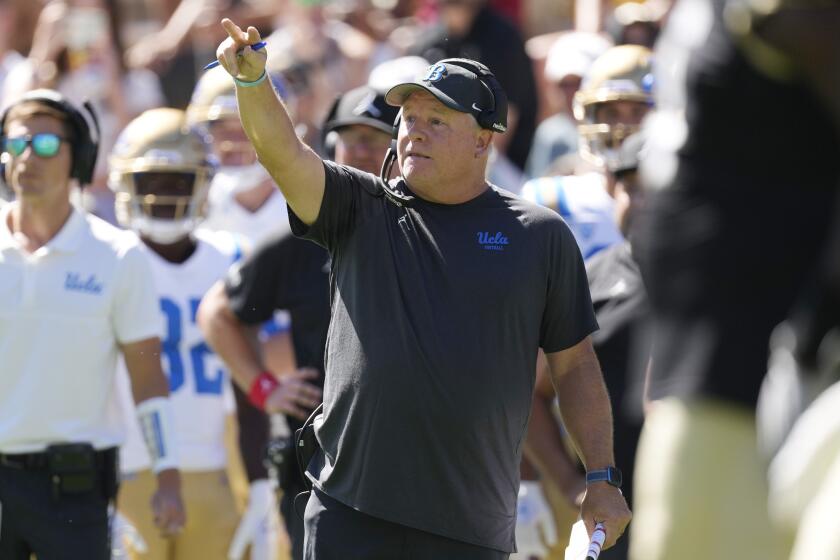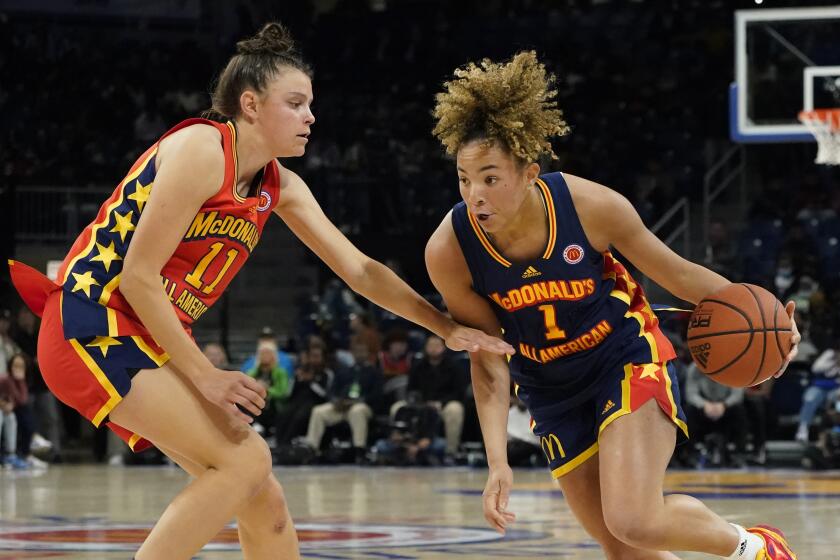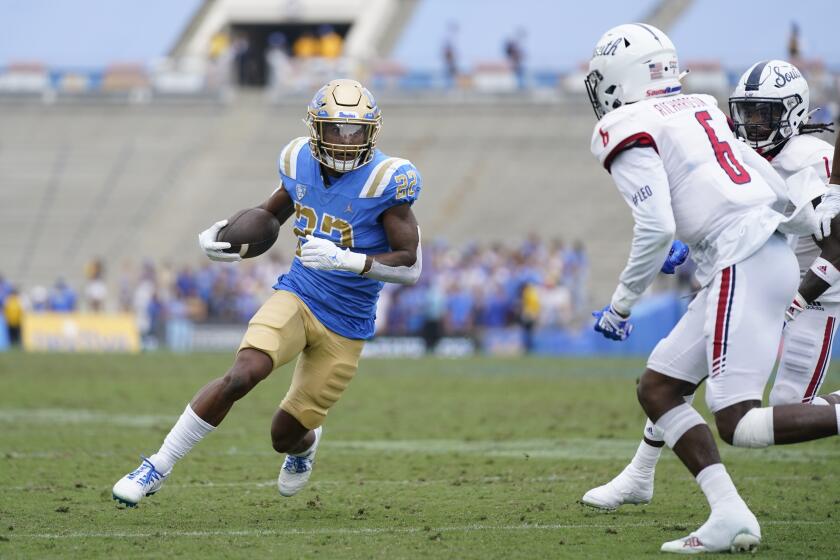Why UCLA’s plans for an on-campus football stadium were dashed and unlikely to be revived
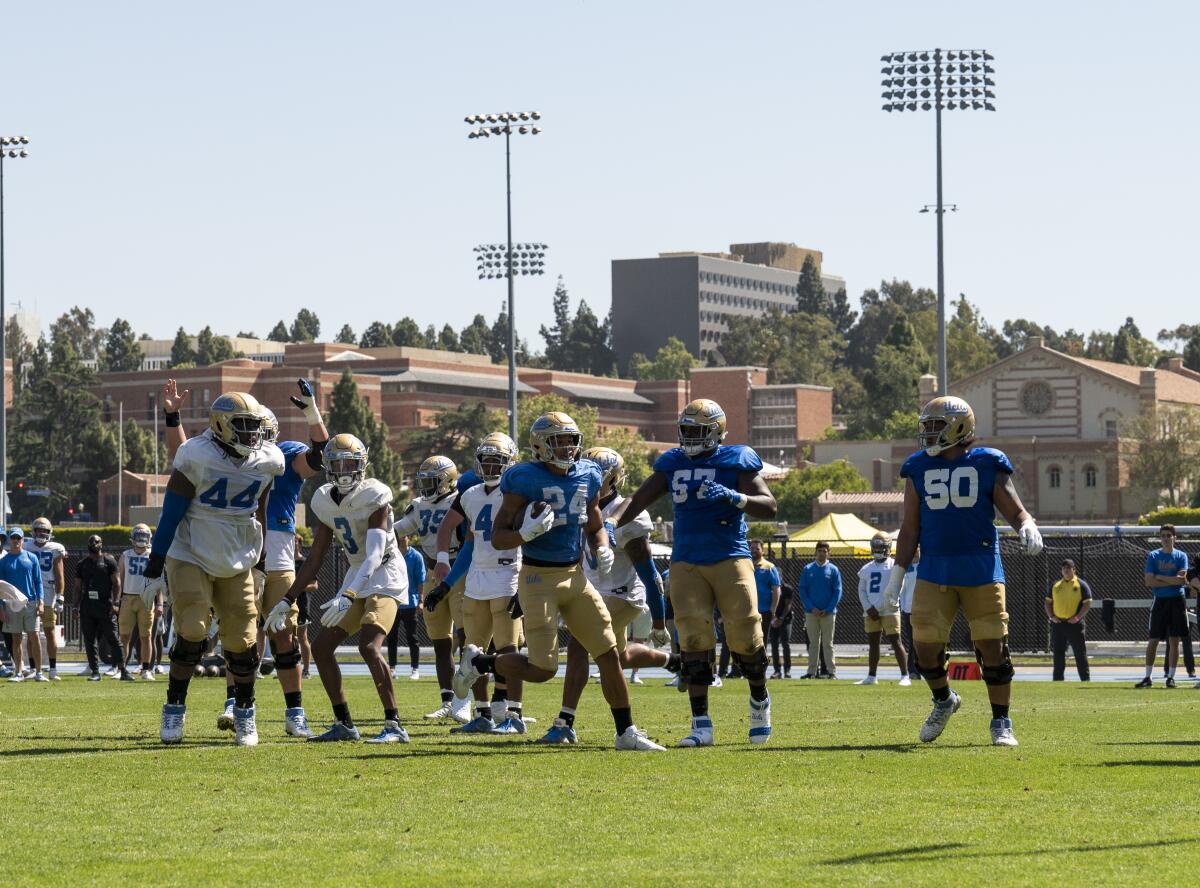
- Share via
To hell with the hassle. Matt Phillipi is going to see his UCLA Bruins play football, no matter the headaches.
The hour or so spent in Friday afternoon traffic. The bus that will deposit him on the opposite side of the Rose Bowl from his tailgate, requiring a long walk. The late-night ride back to campus that might feel funereal if the Bruins lose.
Philippi will endure it all to see UCLA face No. 15 Washington in a battle of Pac-12 Conference unbeatens, having made the same sacrifice to support his favorite team for years.
“It’s just a whole process every time,” said the junior psychobiology major.
Like many of his classmates, Phillipi has contemplated what it would be like not to make that 26.2-mile slog from Westwood to Pasadena, to revel in a short walk to games like other college football teams they watch with envy on television.
A day after its dominant victory over Colorado, UCLA returns to the practice field in preparation for Friday’s game against No. 15 Washington.
“If we could tailgate at our fraternity house or Janss Steps or that kind of place,” Phillipi said, referring to sites on or near campus, “I think so many more people would go to games and there would be so much more hype around it.”
More than a half-century ago, UCLA students nearly got to experience the buzz of home games much closer to home.
Momentum was building for construction of an on-campus stadium in 1965, back when the Bruins played their home games at the Coliseum. UCLA chancellor Franklin D. Murphy promoted the construction of a $6.5-million, 44,000-seat stadium that would be nestled into the hillside west of the student athletic fields. It would be financed by student incidental fees, athletic income and pledges from alumni and donor groups.
“The lack of an on-campus stadium is the missing component to the most productive and decorated collegiate athletic department in existence.”
— Former UCLA quarterback Gary Beban
A feasibility study was conducted. Architecture plans were drawn and a stadium model was displayed in the student union. Among other amenities, the stadium would house a regulation football field plus a 440-yard, nine-lane track, outdoor lighting, concession stands, restrooms, scoreboards, a two-level press box, team dressing and shower rooms, management offices and ticket booths.
There was pushback. Students twice voted against the proposal and staged a protest outside Murphy’s office. The campus newspaper, the Daily Bruin, ran an editorial opposing the stadium and the use of student fees to fund it. Most vocal in their opposition was the Westwood Community Planning Committee directors who represented homeowners in Bel-Air, Brentwood, Westwood and South Westwood.
“It was the neighbors who didn’t like the possibility of any parking problems and didn’t like the possibility of traffic and of noise and interruptions five days a year,” Charles E. Young, the former UCLA chancellor who at the time was immersed in stadium planning efforts as Murphy’s vice chancellor, said this week.
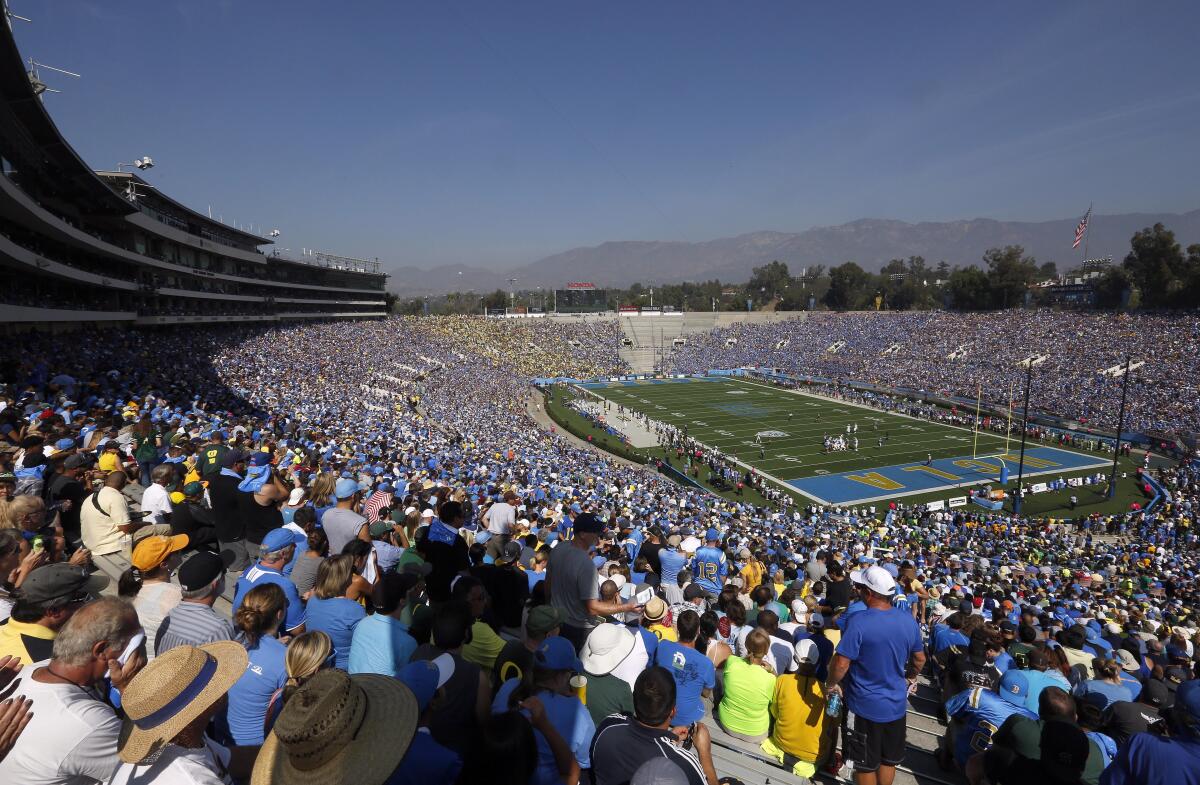
Young tried his best to assuage the homeowners’ concerns, telling them most people going to the game would already be on campus and parking would not be an issue given the availability of spaces on weekends.
It was a losing battle. Siding with the homeowners were Gov. Edmund G. “Pat” Brown and University of California regent Dorothy Chandler. Brown courted the votes, not to mention the vast political contributions, of those wealthy homeowners in his 1966 reelection campaign against Ronald Reagan. Chandler, the mother of then-Los Angeles Times publisher Otis Chandler, appeared beholden to those same homeowners who had helped her fundraising efforts for the Music Center downtown.
Ultimately, the regents delivered a double setback to UCLA’s stadium efforts, Young said. Not only was the proposed football stadium nixed, but any stadium built on that spot could also not later be enlarged into a facility that could house a football team.
With Kiki Rice and Gabriela Jaquez part of a standout freshman class, the UCLA women’s basketball team is hoping to see a resurgence in 2023.
“That’s damning, damning, damning,” Young said. “Not only can you not do it now, but you can’t do it in such a way that in some time in the future, if things change, you could then go ahead and expand it.”
UCLA pivoted to plans for what became Drake Stadium, the 11,700-seat track and field stadium that opened in 1969 and curiously received UC regent support even though it was also funded by student fees. The football team continued to play alongside USC at the Coliseum until 1982, when another tenant arrived in the NFL’s Raiders.
Young, who by then had become UCLA’s chancellor, moved the Bruins to the Rose Bowl that same year in a decision wildly unpopular with coach Terry Donahue.
“He said, ‘Chancellor, you have just sounded the death knell of UCLA football,’” Young said, recalling Donahue’s concerns about the Bruins deserting central Los Angeles and the Black community so crucial to the team’s recruiting.
“If we could tailgate at our fraternity house or Janss Steps or that kind of place, I think so many more people would go to games and there would be so much more hype around it.”
— UCLA student Matt Phillipi
But by the end of that first season, UCLA playing before a crowd of 104,991 for its victory over Michigan in the Rose Bowl game, Donahue was among the biggest backers of the Bruins’ new home.
Decades later, UCLA and Miami remain the only Power Five conference teams to play home games more than a short drive from campus.
“The lack of an on-campus stadium is the missing component to the most productive and decorated collegiate athletic department in existence,” said Gary Beban, the former UCLA quarterback who won the Heisman Trophy in 1967.
Fan support at the Rose Bowl has wavered over the years. UCLA averaged a record 76,650 as recently as 2014, but attendance has dropped to the point that the school added massive tarps in each end zone to cover unused seats. For its first three home games this season, the Bruins have announced an average of 30,072 fans, even though significantly fewer showed up.
UCLA has an average home attendance of 30,072 that ranks 10th in the Pac-12, above only Oregon State (26,475) and Washington State (24,422).
UCLA has better odds of making the College Football Playoff than getting an on-campus stadium. Its Rose Bowl lease runs through June 30, 2044, without an opt-out clause, and the current campus infrastructure that includes the L.A. Tennis Center and a parking lot under the intramural field makes expansion of Drake Stadium practically impossible.
“In my opinion, the idea of an on-campus football stadium would still be DOA just like it was several decades ago,” said John Sandbrook, a former longtime UCLA aide to Young. “Today, the reality is that such a proposal, even if it could be built, would be highly disruptive for campus operations on weekends each fall, the extent of which is much greater today than 55 years ago.
“Notwithstanding the dreams of some, I would think there would be very little support, overall, for revisiting the 1965 decision in the current environment, even at a smaller scale of, say, 30,000 seats.”
That doesn’t mean Philippi and his classmates inching their way up the 405 on Friday afternoon can’t stare wistfully out the windows of their bus, longing for what might have been.
More to Read
Go beyond the scoreboard
Get the latest on L.A.'s teams in the daily Sports Report newsletter.
You may occasionally receive promotional content from the Los Angeles Times.

